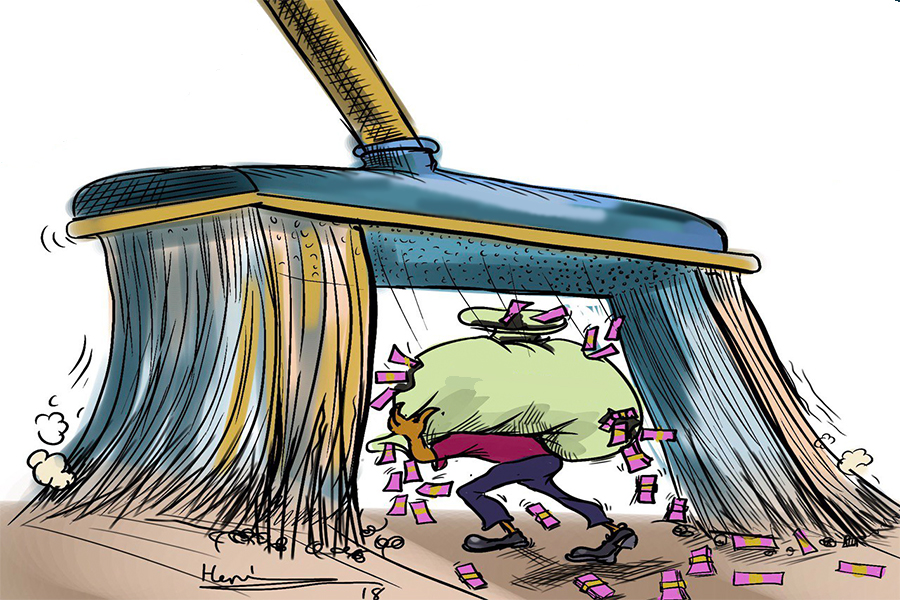
Photo Gallery | 180713 Views | May 06,2019
Sep 1 , 2024.
The Birr has continued to see a sharp depreciation against the U.S. dollar over the six days last week, exposing the economy's fragility following the National Bank of Ethiopia's (NBE) decision to float the currency. Intended to align the Birr with market dynamics, boost exports and attract foreign investment, the policy shift instead unleashed volatility and a rapid decline in the currency's value between August 26 and August 31, 2024.
An analysis of exchange rates across 17 banks during this period reveals what should be an unsettling trend. The Birr has consistently lost value, with buying and selling rates rising sharply. The lowest buying rate averaged around 104.71 Br for a dollar, while the highest reached nearly 107.35 Br. On the selling side, the rates started at about 116.05 Br a dollar and escalated to a peak of 120.08 Br by the end of the week. This three percent depreciation within six days showed the downward trajectory of the currency, exacerbated by market uncertainties and diminished confidence.
The highest selling rate Gaada Bank (GDB) offered last week represented a 105.81pc loss of the Birr against the dollar since the Birr's value was made to be determined on the open market in late July 2024.
GDB consistently offered the highest buying rates since, starting at 107.35 Br on August 26 and maintaining that rate throughout the week, closing at the same level on August 31. GDB’s aggressive approach to attracting foreign currency positioned it as a market driver. In contrast, banks like the state-owned Commercial Bank of Ethiopia (CBE) and Dashen Bank (DSH) offered the lowest buying rates, hovering between 104.20 Br and 104.60 Br.
The conservative stance reflects their cautious approach in a volatile environment. On the selling side, CBE and GDB were once again outliers, offering some of the most competitive rates.
GDB’s selling rate peaked at 120.08 Br for a dollar, a rate also observed at Tsehay Bank (TSB) and Enat Bank (ENT) on August 31. Their aggressive pricing strategy likely sought to optimise returns in a depreciating market. Conversely, CBE and Amhara Bank (AMB) offered more conservative selling rates, averaging between 116.05 and 117.03 Br, signalling an effort to stabilise transactions and maintain client confidence amid the currency's volatility.
The most pronounced fluctuations were seen at Berhan International Bank (BIB), TSB, and ENT, where exchange rates were not only volatile but also substantial. BIB, for instance, saw its selling rate jump from 117.49 Br on August 26 to 119.84 Br on August 31, marking a 2.4pc increase within a week. The volatility reflects the banks' struggles to manage the new floating exchange rate regime, balancing the need to attract foreign currency with the risk of rapid devaluation. The high spreads between buying and selling rates, particularly the 15pc observed at BIB, indicate a heightened risk premium being factored into transactions as banks attempt to respond to potential losses in an unpredictable market.
The behaviour of the banks, particularly those with more volatile offerings, reflects a broader uncertainty in the market. The floating of the Birr has exposed the currency to the full force of market dynamics for the first time in five decades. As the economy adjusts to this new reality, the coming weeks will be critical in determining whether the Birr can stabilise or if further depreciation and volatility are inevitable. The hope is that Birr’s depreciation will eventually lead to a more balanced and stable economy, but the risks of prolonged instability remain high.
These developments carry implications for the broader economy. Businesses dependent on imported goods face rising costs due to the depreciating Birr, likely leading to higher consumer prices and exacerbating inflationary pressures. While benefiting from a weaker Birr, exporters should be contend with the unpredictability of exchange rates, which could erode profit margins. The ongoing depreciation also threatens to destabilise economic recovery efforts, undermining investor confidence and putting additional strain on the country’s already limited foreign exchange reserves.
PUBLISHED ON
Sep 01,2024 [ VOL
25 , NO
1270]

Photo Gallery | 180713 Views | May 06,2019

Photo Gallery | 170907 Views | Apr 26,2019

Photo Gallery | 161999 Views | Oct 06,2021

My Opinion | 137305 Views | Aug 14,2021

Nov 1 , 2025
The National Bank of Ethiopia (NBE) issued a statement two weeks ago that appeared to...

Oct 25 , 2025
The regulatory machinery is on overdrive. In only two years, no fewer than 35 new pro...

Oct 18 , 2025
The political establishment, notably the ruling party and its top brass, has become p...

Oct 11 , 2025
Ladislas Farago, a roving Associated Press (AP) correspondent, arrived in Ethiopia in...